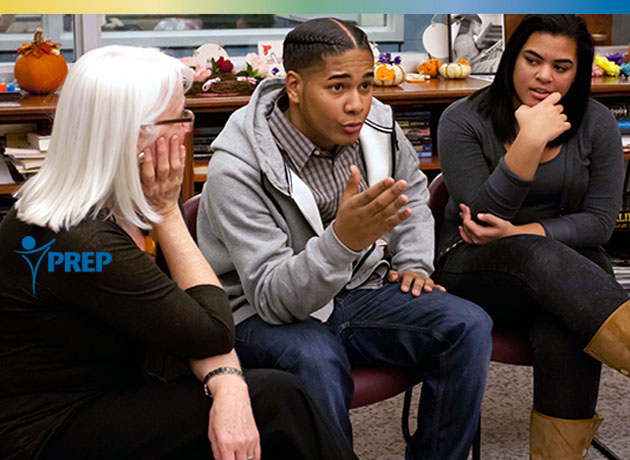 More than half a million adolescents in the United States attend alternative schools or other specialized education programs for youth at risk of academic failure. Many of these youth have emotional or behavioral health issues and might be at high risk for teen pregnancy and sexually transmitted infections (STIs). To date, there has been little research on adolescent pregnancy prevention programming designed to meet the needs of youth in alternative school settings. A new implementation report from Mathematica Policy Research helps address this research gap.
More than half a million adolescents in the United States attend alternative schools or other specialized education programs for youth at risk of academic failure. Many of these youth have emotional or behavioral health issues and might be at high risk for teen pregnancy and sexually transmitted infections (STIs). To date, there has been little research on adolescent pregnancy prevention programming designed to meet the needs of youth in alternative school settings. A new implementation report from Mathematica Policy Research helps address this research gap.
With funding from the Administration for Children & Families within the U.S. Department of Health and Human Services, Mathematica collaborated with the New York State Department of Health to rigorously evaluate the Teen Choice curriculum in alternative school settings in and around New York City.
Teen Choice is funded through the Personal Responsibility Education Program (PREP), which provides federal funding to educate youth on abstinence and contraception. The report is part of a multicomponent evaluation of PREP led by Mathematica for the Administration for Children & Families at the U.S. Department of Health and Human Services.
To conduct the study, Mathematica partnered with Inwood House, a nonprofit agency that developed and delivered the Teen Choice curriculum in five New York City-area schools serving high-risk youth. The curriculum—comprising twelve 45-minute sessions—covers a range of topics including communication, decision making, sexuality, healthy relationships, abstinence, contraception, and STIs. Teen Choice relies on a mutual aid approach to instruction, which strives to create a trusting learning environment within each group that is built on constructive interactions among students and the facilitator.
Regarding implementation of the program, the study found the following:
- Program staff and participating youth liked Teen Choice. Facilitators reported appreciating the flexibility of Teen Choice’s curriculum and its mutual aid approach. They indicated that, in their view, the mutual aid approach used in Teen Choice helped students develop trusting relationships with one another and ultimately assisted them in identifying with and retaining the program’s messages. Evaluation team members observed that youth were generally engaged and willing to participate in group discussions. In focus groups, most participants indicated they had increased their knowledge of contraception and STIs during their time in the program.
- Attendance was a challenge. By design, the youth that Inwood House targeted for Teen Choice had substantial academic and behavioral issues, which included poor school attendance. Program and school staff worked together to address attendance challenges by offering reminders about upcoming sessions, providing gift cards for regular attendance, and scheduling classes during times of the day and week that students were most likely to attend. Despite these efforts, poor attendance remained a challenge throughout the study period. Across all study schools, youth enrolled in Teen Choice attended 53 percent of the sessions offered. Absence from school was the most common reason for students to miss a Teen Choice session.
Mathematica conducted this implementation study in conjunction with a rigorous impact study using a random assignment research design, in which students were assigned to receive either the Teen Choice curriculum or their regular programming. An upcoming impact report, scheduled for release in 2018, will examine the effects of the program on participating students’ attitudes, knowledge, and sexual activity six months after they completed the program.

